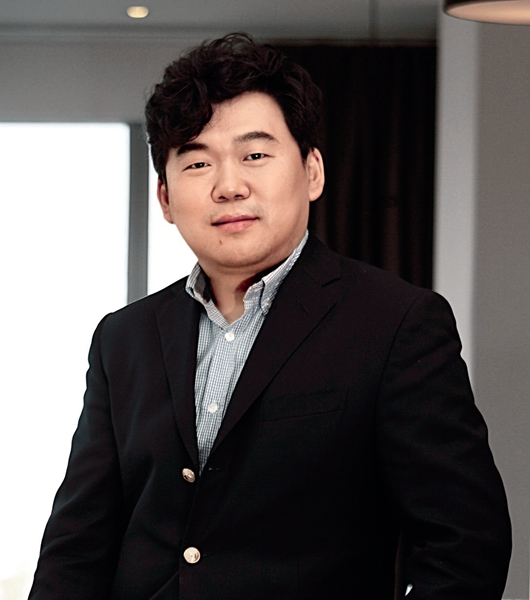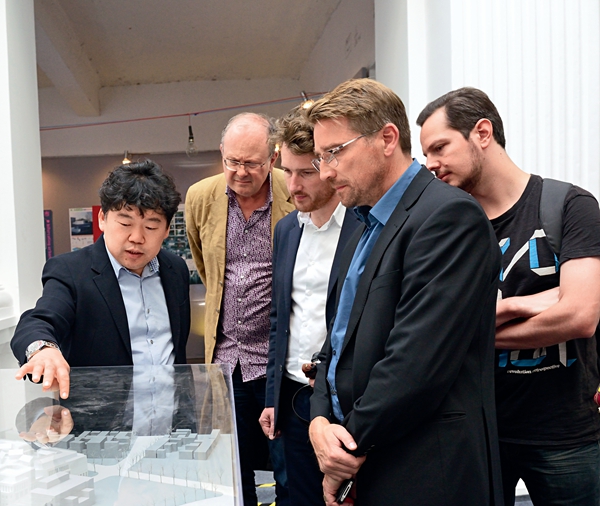By staff reporter AN XINZHU
By staff reporter AN XINZHU
WU Chen is an expert in urban planning and historical area preservation, and author of such architectural icons as China Zun, Beijing’s tallest building currently under construction in the capital’s CBD. He is also responsible for the design of China’s fourth generation railway stations, and is a main force in the project to conserve the old city of Beijing.

Wu Chen:
Chief architect at the Beijing Institute of Architectural Design, member of the Chartered Institute of Building, and designer of Beijing’s new architectural icon China Zun.
Wu Chen, who was born and bred in Beijing, went to the U.K. to study in 1995. He has since become the first architect from China’s mainland to gain membership of the Chartered Institute of Building, and of the Royal Town Planning Institute. As one of the professionals involved in China’s Recruitment Program of Global Youth Experts, Wu has returned to his home country and is chief architect at the Beijing Institute of Architectural Design.
Return with a Dream
“Human activity is the most important factor of urban life,” Wu Chen said. “However, most cities in China have not yet realized this, even though they have achieved rapid development.” In the first few years of the 21st century, some big cities in China built a good number of large scale sculptures and landmark constructions. Unlike European cities, which are developed and at the same time conserved through prudent planning, however, Beijing seemed at one time to be laboratory for overseas architects. Wu publicly criticized this trend and decided to return to his home country to design buildings in a more appropriately Chinese style.

While working in London, Wu took part in several key projects, notably the design of the new Home Office headquarters. It was this project that made him aware of the changes that have occurred in London’s time-honored city agglomerations since the turn of the 21st century. Disused inner city factories and old buildings have been rebuilt with new functions added, rather than being allowed to degenerate into ruins. Wu gained great inspiration from the concept of urban renaissance initiated in the U.K. in the 1980s. He perceived from London’s rich history the significance of passing down cultural heritage. In his opinion, urban renaissance has much in common with the medieval Renaissance, in that both seek a perfect fusion of the spiritual and material worlds. To some extent, this perception has influenced Wu’s ideas about architectural design and urban planning since leaving the U.K.
Wu put his idea of urban renaissance into practice in Beijing, his birthplace. Since 2001, he has promoted technical innovation of urban design as applied to architectural engineering design practice. In 2002, he put forward his urban renewal theory to explain and solve the problem of urban development in the new era.
Traditional Compounds Generate Modern Dynamics
Over the years, Wu Chen and his team have carried out numerous research and design projects in Beijing’s historical districts, such as the city’s Central Axis, the Dashilar area, the White Pagoda Temple, Shichahai Lake, Nanluoguxiang Alley, and Qianmen Street, to name but a few.
In both his research and practice, Wu adheres to the philosophies of active protection, integral innovation, and all-round rejuvenation. His ultimate aim is to preserve time-honored areas and restore historical legacies while facilitating sustainable urban development.
Many old buildings stand on Nanluoguxiang Alley, one of the oldest blocks in Beijing. It presents a microcosm of traditional local life. But unauthorized constructions by some shops on the alley have coincided with the growing numbers of tourists that converge there. In order to protect its authentic historical charm, Wu’s team worked out a preservation plan for the district. It takes the form of Beijing’s first-ever prescribed local standards for preservation of the old city. Every detail – from the size of window frames to features of the block as a whole – has been set down with the aim of conserving the traditional culture.
Dashilar used to be a commercial center in old Beijing. Located just 200 meters from Tian’anmen Square in the city center, it has always been one of Beijing’s popular tourist spots. But in recent decades the area has been overshadowed by the modern shopping malls in surrounding areas, particularly since the turn of the 21st century. Helping Dashilar restore its former glory was a challenge for Wu and his team.
It took them more than 10 years to draw up and refine its project plan. Wu Chen and the team carefully measured and evaluated each room and column in the area. After a dozen or so drafts, they eventually positioned the block as a fusion of tradition and modernity. Thanks to their efforts, today’s Dashilar retains its old style while embodying contemporary vigor.
In 2010, Wu Chen’s design won the bidding for China Zun. A tower block 528 meters tall in Beijing’s Central Business District, China Zun is the city’s tallest building designed by a Chinese architect. It also claims to be the world’s tallest skyscraper capable of withstanding a magnitude-8 earthquake.
Internationally prestigious architects and architectural design offices took part in the bidding, but despite intense competition, Wu Chen’s design was the most outstanding among the 80 tenders. The building’s gently rising and curving shape resembles the ancient Chinese ceremonial vessel known as the zun, for which it is named. In showcasing urban vitality as embodied in traditional Chinese culture, Wu has set a good example for “Chinese design.”
Potential World-class Architects
“It is a great honor to be invited to take part in the Recruitment Program of Global Youth Experts,” Wu said. “I’ve been working in an unfettered and pleasant atmosphere since returning to China, something an architect always appreciates.” At the same time, China’s rapid development has provided Wu with a platform on which to give full play to his expertise.
Wu is now head of the engineering and technological research center of Beijing’s city planning and urban renewal. Established in 2015, it is China’s first provincial level research center in this field. Wu always introduces himself as an architect, a city planner, and a city researcher. He hopes that his designs become integral to the country’s rapid progress.
China boasts the world’s longest high-speed railway network, and so has a growing need for bullet train stations and ultra large transportation hubs. Wu has designed seven high-speed train stations for several cities, including Guangzhou, Nanjing, and Qingdao. He has also put forward the design principle for China’s fourth generation railway stations, wherein railway stations play a central role in a city’s development, while urban planning serves as a technical platform.
Redevelopment of brownfield land and economic transformation are vital to reviving urban industrial ruins. Since 2009, Wu Chen has led his team’s continuous research into the transformation of the old Beijing Shougang Group factory site. One of China’s leading steel manufacturers, the plant began relocating some of its facilities to Hebei Province several years prior to the 2008 Beijing Olympics. This was one of the country’s largest industrial district renovation projects. Wu’s team has transformed the disused complex into an organizational hub for the 2022 Winter Olympics. More renovation projects are in progress on the old factory site, so demonstrating the successful transformation of an industrial district.
Since last year, Wu has used mathematical models to analyze and simulate complex urban problems. Beijing is now building its suburban Tongzhou District into a subsidiary administrative center to ease overcrowding in the city, thus reshaping the city’s spatial pattern.
“Beijing’s historical areas are embracing the opportunity to revive traditional culture,” Wu said. Construction of the capital’s subsidiary administrative center and Xiongan New Area, an economic zone in Hebei Province about 100 kilometers southwest of Beijing, provide favorable conditions. Wu expects architects and city planners to grasp this chance. “World-class architects from China will most likely come to the fore from our generation onwards,” Wu concluded.